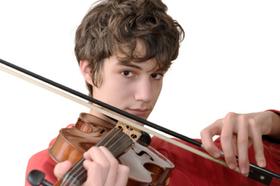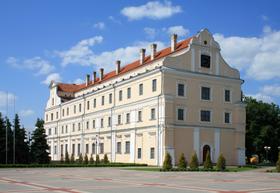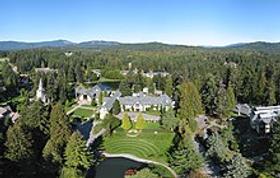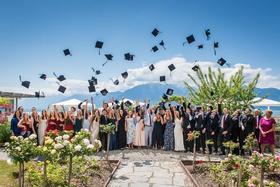The staff wrote this article on Boarding Schools in the USA.
Arts programs are an especially appealing aspect of selecting a U.S. boarding school. You may be narrowing your search to U.S. programs because contemporary and traditional art forms flourish in this country, and many of our boarding schools excel in arts instruction and practice.
To be sure, arts programs vary widely. Some programs specialize in visual art (drawing, painting, sculpture, photography, ceramics, and computer graphics), theatre (acting and theatre design), dance (ballet, jazz, or modern), creative writing, music (vocal or instrumental), or filmmaking. Other schools offer relatively little instruction in the arts and specialize more in outdoor activities, military training, etc.
When choosing a boarding school in the U.S.A., it is important to match your interests and goals, which may change over time, with the school's strengths.
Research each school's offerings to see if the arts are part of your interests and passions. Spend time reading the school's literature and visiting its website. Be sure to look for the qualifications of the teachers, who may themselves be artists, and the range and level of available courses. Examine the facilities available—the theater, studios, and practice rooms. If possible, visit the school yourself.
You should evaluate whether the arts are your priority. Arts courses may be just a part of the well-rounded education that you wish to enjoy. If you want to concentrate on your interests and develop your unique talents, a school with an excellent arts program will provide time for class/studio instruction and practice or creative periods. Ask the Admissions Office or your future teachers how much time is available each day for you to pursue your field, and find out how well the school does each year, placing its graduates in universities and institutes with further opportunities in the arts.
Finally, the school's location may be necessary. Does the school have access to performers, filmmakers, and teachers who could help you grow? This could be especially important if you need to study privately with a local performer, for example, or join classes at the city’scity's academy.
A wide variety of arts programs
If you are dedicated to a career in the arts, you might consider a boarding school specializing in developing your talent.
The Idyllwild Arts Academy in California asks prospective students to audition for admission into one of its seven arts majors.
Idyllwild students spend half of each day in pre-professional training in the arts and half in university preparatory academics, including ESL (English as a Second Language.)
Near Los Angeles and Hollywood, the campus has a film soundstage, three dance studios, seven art studios (painting, sculpture, computer graphics, ceramics, photography, drawing, and printmaking), 25 music practice rooms, an art exhibition center, and four performance facilities. Additionally, the campus has normal classrooms, science labs, and a library.
Each year, graduates from Idyllwild are accepted to music conservatories, art schools, film schools, theatre programs, dance companies, academic colleges, and universities in the U.S.A.
Miller School in Virginia provides a woodshop where Woodworking students, both in groups and individually, can build kayaks, blanket chests, and other items. Students start in the drafting section of the course by learning to draw the blanket chest. Next, they learn to use stationary power tools. After mastering the machine skills needed, they start working on the chest's components until they are completed. They also acquire the skills of hardware installation and applying finish to the completed chest.
Arts are an integral part of education at Purnell School. Each girl enrolls in at least three performing and three studio art courses during her four years at the New Jersey school. Students in higher grades choose “elective” classes "uch as j"zz dance, dance improvisation, the creative process in movement, acting, clowning, innovative theater, classical voice training, music theory, instrumental music, and modern and world dance history. Each year, Purnell students produce a full-length musical show in two and a half weeks during “Project Explora" ion.” They build set," run lights and sound, design costumes, and act.
Beyond traditional drawing, collage, pastels, ceramics, photography, oil painting, charcoals, and fashion design, Purnell girls also work on projects such as art portfolios and furniture installation. Students also take art history classes, including trips to museums in nearby New York City.
Summer Study
You may begin your U.S. studies with a summer program for high school (secondary) students.
New York University’s Tisch School University'soffers university-level summer programs in New York and Europe. Drama students interested in studying in New York choose a program with one of these professional training studios: Acting with the Lee Strasberg Theatre Institute, the Experimental Theatre Workshop (ETW), or Musical Theatre Performance with Collaborative Arts Project 21 (CAP21).
Future filmmakers can choose from Filmmakers Workshop: Narrative, which offers hands-on training in all aspects of video production, or Filmmakers Workshop: Animation. Students make their films using techniques such as flipbooks, stop-motion puppets, claymation, and computer-generated imagery. They work with Final Cut Pro, PhotoShop, AfterEffects, and 16 mm cameras.
Young writers develop scripts in the Dramatic Writing for High School Students Program. They learn to write for both stage and screen, act in readings and plays, and later stage, shoot, edit, produce, and critique their work. Students with a musical interest try their hand at Musical Theatre Writing in a workshop where they will learn about music, lyrics, and story.
Each program is unique.
Each boarding and summer school in the U.S.A. has its resources, culture, and instructors. Finding a program that matches your interests and abilities will require sensitive self-evaluation and thoughtful research. Consequently, you may soon attend one of the world's finest schools.
Questions? Contact us oworld'sook. @boardingschoolreview





























































